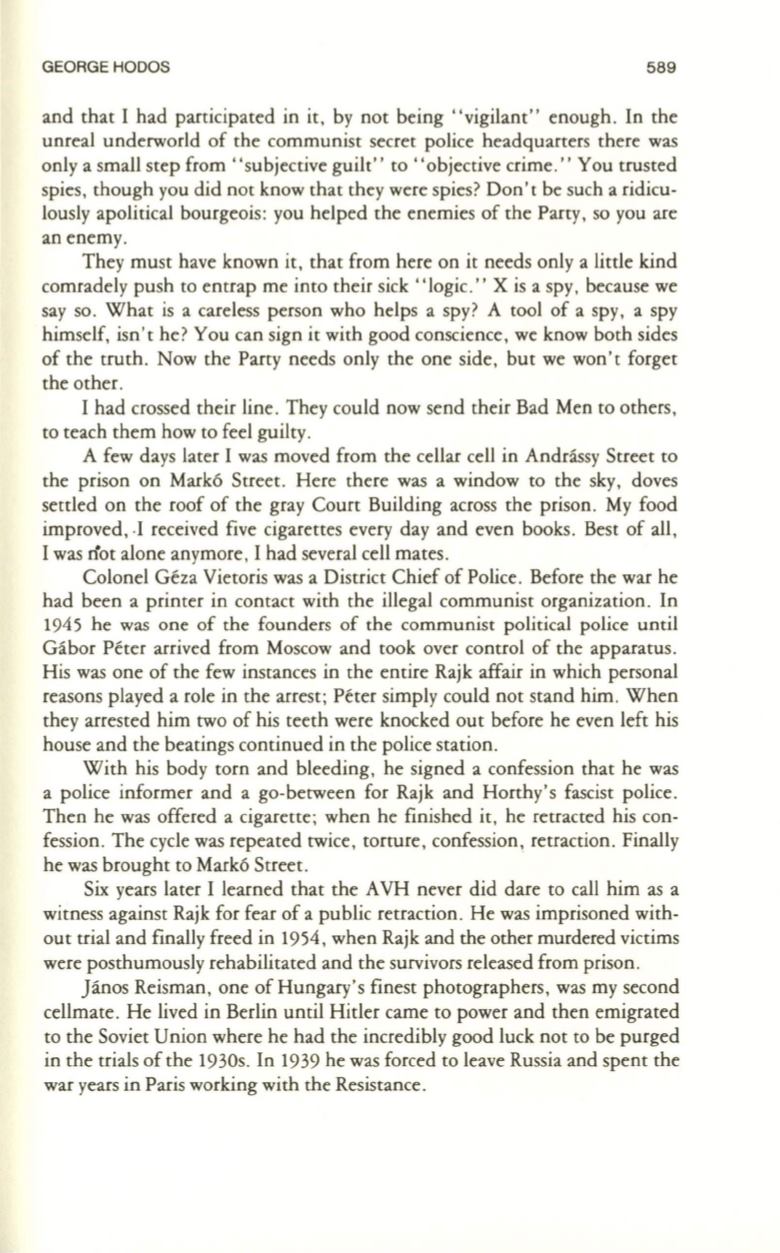
GEORGE HODOS
589
and that I had participated in it, by not being' 'vigilant" enough. In the
unreal underworld of the communist secret police headquarters there was
only a small step from "subjective guilt" to "objective crime." You trusted
spies, though you did not know that they were spies? Don't be such a ridicu–
lously apolitical bourgeois: you helped the enemies of the Parry, so you are
an enemy.
They must have known it, that from here on it needs only a little kind
comradely push to entrap me into their sick "logic." X is a spy, because we
say so. What is a careless person who helps a spy? A tool of a spy, a spy
himself, isn't he? You can sign it with good conscience, we know both sides
of the truth. Now the Party needs only the one side, but we won't forget
the other.
I had crossed their line. They could now send their Bad Men to others,
to
teach them how to feel guilty .
A few days later I was moved from the cellar cell in Andrassy Street to
the prison on Mark6 Street. Here there was a window to the sky, doves
settled on the roof of the gray Court Building across the prison. My food
improved, .I received five cigarettes every day and even books. Best of all,
I was not alone anymore, I had several cell mates .
Colonel Geza Vietoris was a District Chief of Police. Before the war he
had been a printer in contact with the illegal communist organization. In
1945 he was one of the founders of the communist political police until
Gabor Peter arrived from Moscow and took over control of the apparatus.
His was one of the few instances in the entire Rajk affair in which personal
reasons played a role in the arrest; Peter simply could not stand him. When
they arrested him two of his teeth were knocked out before he even left his
house and the beatings continued in the police station.
With his body torn and bleeding, he signed a confession that he was
a police informer and a go-between for Rajk and Horthy's fascist police.
Then he was offered a cigarette; when he finished it, he retracted his con–
fession . The cycle was repeated twice, torture, confession, retraction. Finally
he was brought to Mark6 Street.
Six years later I learned that the AVH never did dare to call him as a
witness against Rajk for fear of a public retraction . He was imprisoned with–
out trial and finally freed in 1954 , when Rajk and the other murdered victims
were posthumously rehabilitated and the survivors released from prison.
Janos Reisman, one of Hungary's finest photographers, was my second
cellmate . He lived in Berlin until Hitler came to power and then emigrated
to the Soviet Union where he had the incredibly good luck not to be purged
in the trials of the 1930s. In 1939 he was forced to leave Russia and spent the
war years in Paris working with the Resistance .


